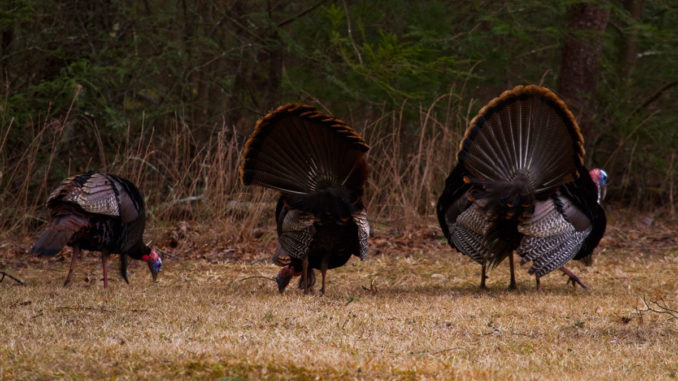
Early in the season, gobblers will often be grouped in pairs or larger groups. Seeing several toms coming into decoys gobbling every step can be one of the most exciting sights of any hunter’s season.
Birds traveling together are often siblings from the same hatch, sometimes with an older, dominant bird trailing a few steps behind. Killing one of the lead birds in the flock will immediately educate the remaining birds, or at least the ones that were attentive enough and paying attention. They will generally remember what the decoy looks like and maybe what the calling sounded like that led to their sibling’s demise.
Fortunately, the younger, 2 ½-year-old birds are relatively ignorant and cannot get the thought of procreating out of their minds. They will lead the charge, strutting and gobbling aggressively, spitting and putting on a real show for the assumed hen, but the boss bird will keep his composure, looking all around and trying to figure out what is going on.
Harold Knight of Knight and Hale Game Calls has learned to put his shotgun bead on the “looker” in the group at the first of the season.
“Always shoot the looker in groups of gobblers,” he says. “Most of the time, the strutters will strut the next day and gobble, but never the looker,” he said. “The looker is the most cautious. Try to avoid shooting the bird that doesn’t want to stay out of strut.”




Be the first to comment